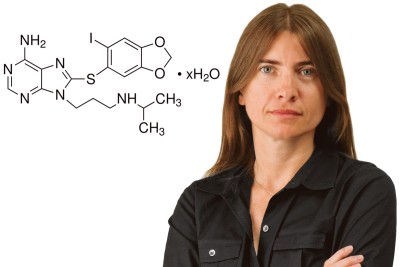
“I’ve always been driven by the hope of discovering something that could make a real difference for patients,” says chemical biologist Gabriela Chiosis.
In pursuit of this goal, her laboratory brings together experts in biology, chemistry, and medicine to investigate proteins called chaperones.
Generally, chaperones help maintain a cell’s basic function by assisting other proteins in folding properly. In some diseases, this protective function of chaperones has the effect of enabling abnormal proteins to become more stable, exacerbating their disease-causing potential. For example, researchers are paying close attention to a chaperone protein called Hsp90, which is known to play a role in many types of cancer as well as in some neurodegenerative diseases, including Alzheimer’s disease.
“Hsp90 is a very promising target for cancer therapy,” Dr. Chiosis says. “Cancer cells tend to become addicted to its activity, which helps maintain the stability of numerous proteins that drive tumor growth and progression.”
Six years ago, Dr. Chiosis and her colleagues discovered a small molecule called PU-H71 (shown at right), which can be used to block the activity of Hsp90 in laboratory-grown cancer cells and in mouse tumors. The compound shows potential for the treatment of various cancers, and is now being tested for the first time in patients at Memorial Sloan Kettering. (It is not yet known whether PU-H71 will be effective against cancer. The current study will evaluate the optimal dose of the drug and whether it causes any side effects, which are the first steps in investigating the safety and efficacy of a prospective therapy in patients.)
In addition, the study will explore the usefulness of a new prediction tool, which may allow doctors to determine which patients are likely to benefit from PU-H71 therapy. Prior to taking the drug, patients will receive a small amount of radioactively labeled PU-H71, which then will be monitored inside their bodies by positron emission tomography. Research in Dr. Chiosis’s lab has indicated that the more sensitive a tumor is to the drug, the more it will light up in such a PET scan.
“The scientific environment of Memorial Sloan Kettering is truly unique,” Dr. Chiosis observes. “While my lab specializes in the chemistry design and optimization of drugs, we work very closely with a number of skilled biologists and clinicians who have profound understanding of the disease and of the medical needs of patients. In merging our respective views, we’ve been able to get things done in a way I doubt would have been possible anyplace else.”

